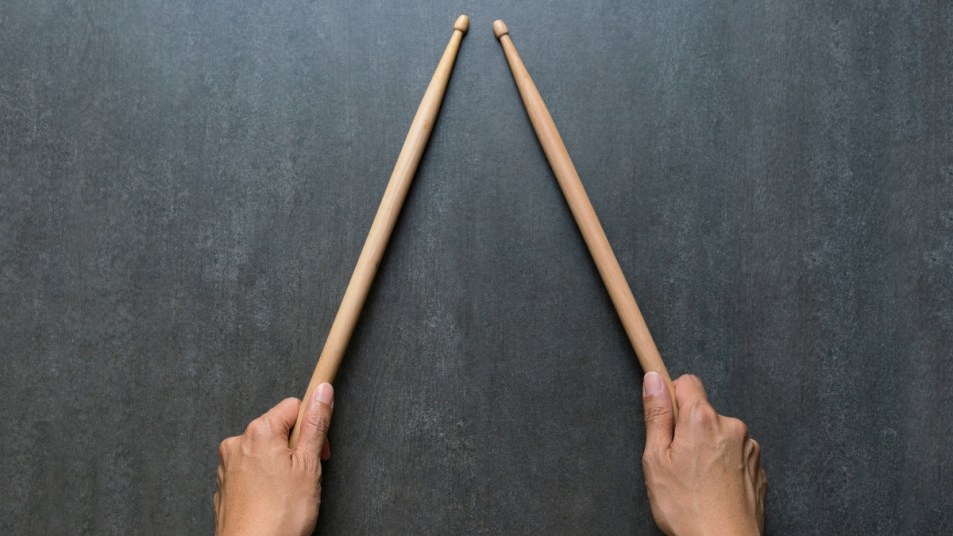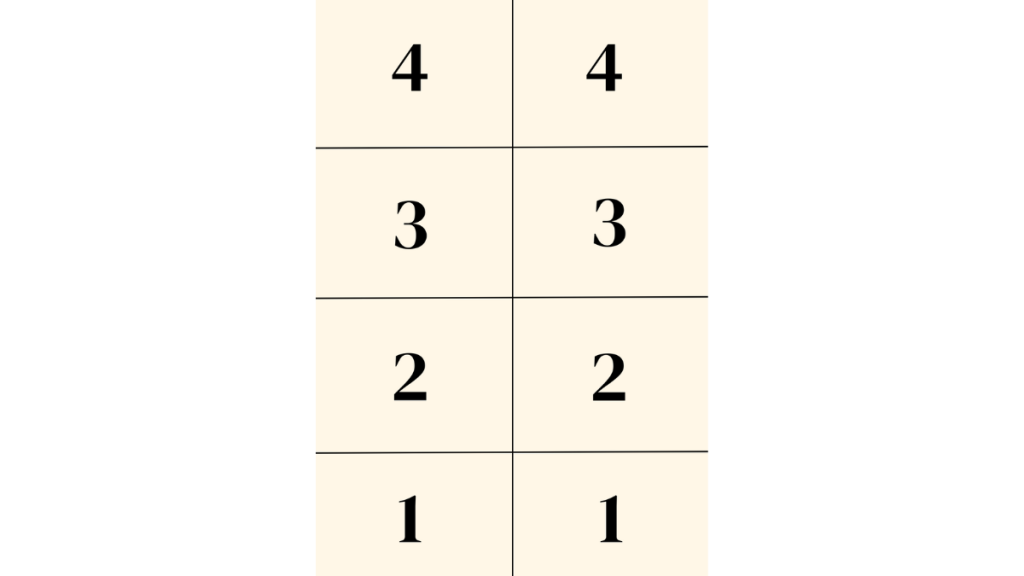This Pen-Tapping Rhythm Test Challenges (and Improves) Memory — Here’s How To Try It
Kick your brain into gear.

Worried about your memory? Minor slip-ups, like forgetting to move your clothes from the washer to the dryer, are nothing to worry about. But partaking in memory games and exercises every now and then is not a bad idea, regardless of your age. There’s just one issue: Brain exercises aren’t always fun, and it’s hard to get into the habit of doing them regularly. Fortunately, there’s a trend on social media that ticks both boxes: It’s fun, and practicing it frequently will keep your mind sharp. TikTokers and Instagrammers are calling it the rhythm challenge, and all you need are two pens, a piece of paper, and a flat surface.
How To Do the Rhythm Challenge
On your piece of paper (oriented as a portrait), draw a line down the middle. Then, draw three lines across, evenly spaced apart, to create eight rectangles. Write the numbers one through four in each box, like so:

Grab your two pens, pencils, or tapping tools. If you want help staying on beat, play a free metronome from your computer. (Click here for the free metronome.) Set the metronome to 55 beats per minute, and you’re ready to begin.
Exercise 1
With your right hand, tap four beats per measure on the right “1” square. (Tap at the same speed as the metronome.) With your left hand, tap eight beats per measure on the left “2” square. (The left hand taps at double the speed of the metronome.) When you’re ready, switch — your right hand now taps eight beats per measure on the right “2” square, and your left hand taps four beats per measure on the left “1” square.
Exercise 2
With your right hand, tap four beats per measure on the right “1” square (the same speed as the metronome). With your left hand, tap 12 beats per measure on the left “3” square (that’s three beats for every one beat on the metronome). When you’re ready, switch — your right hand now taps 12 beats per measure, and your left hand taps four beats per measure.
Exercise 3
Here’s where things get tricky. With your right hand, tap eight beats per measure on the right “2” square (double the speed of the metronome). With your left hand, tap 12 beats per measure on the left “3” square (three beats for every one beat on the metronome). When you’re ready, switch — your right hand now taps 12 beats per measure, and your left hand taps eight beats per measure. Tip: To better understand this beat, think of the rhythm of “Carol of the Bells” as you tap.
Exercise 4
With your right hand, tap four beats per measure on the right “1” square (the same beat as the metronome). With your left hand, tap 16 beats per measure in the left “4” square (four times the metronome speed). When you’re ready, switch — your right hand now taps 16 beats per measure in the right “4” square, and your left hand taps four beats per measure in the left “1” square.
Exercise 5
With your right hand, tap eight beats per measure in the right “2” square (double the metronome speed). With your left hand, tap 16 beats per measure in the left “4” square (four times the metronome speed). When you’re ready, switch — your right hand now taps 16 beats per measure in the right “4” square, and your left hand taps eight beats per measure in the left “2” square.
Exercise 6
Ready for the most challenging test yet? With your right hand, tap 16 beats per measure in the right “4” square (four times the metronome speed). With your left hand, tap 12 beats per measure in the left “3” square (three times the metronome speed). When you’re ready, switch — your right hand now taps 12 beats per measure in the right “3” square, and your left hand taps 16 beats per measure in the left “4” square.
How the Rhythm Challenge Exercises Your Brain
If this seems too challenging, don’t worry — the more you practice, the better you’ll get. And the better you get, the more you strengthen your cognitive function. Dave Farrow, two-time Guinness World Record Holder for greatest memory, says that picking up a new motor skill or hobby kicks our brains back into gear. “Even just standing on one foot during a commercial [works],” Farrow says. “But the key is, it has to be something you’re not comfortable with. It [has to be] new to you.”
Indeed, a 2022 study published in Psychological and Cognitive Sciences found that eight weeks of musical rhythm training improved participants’ memory of human faces. According to the study authors, rhythm training exercised the participants’ short-term memory, visual perception, and selective attention.
So, get comfortable in the uncomfortable. Tap out this rhythm challenge whenever you have a minute or two, and your brain function will soon become impossible to beat.













